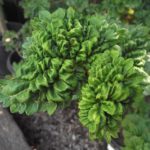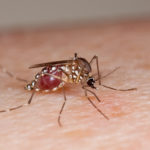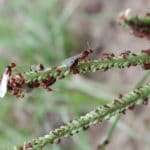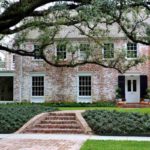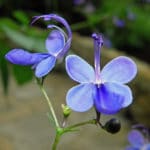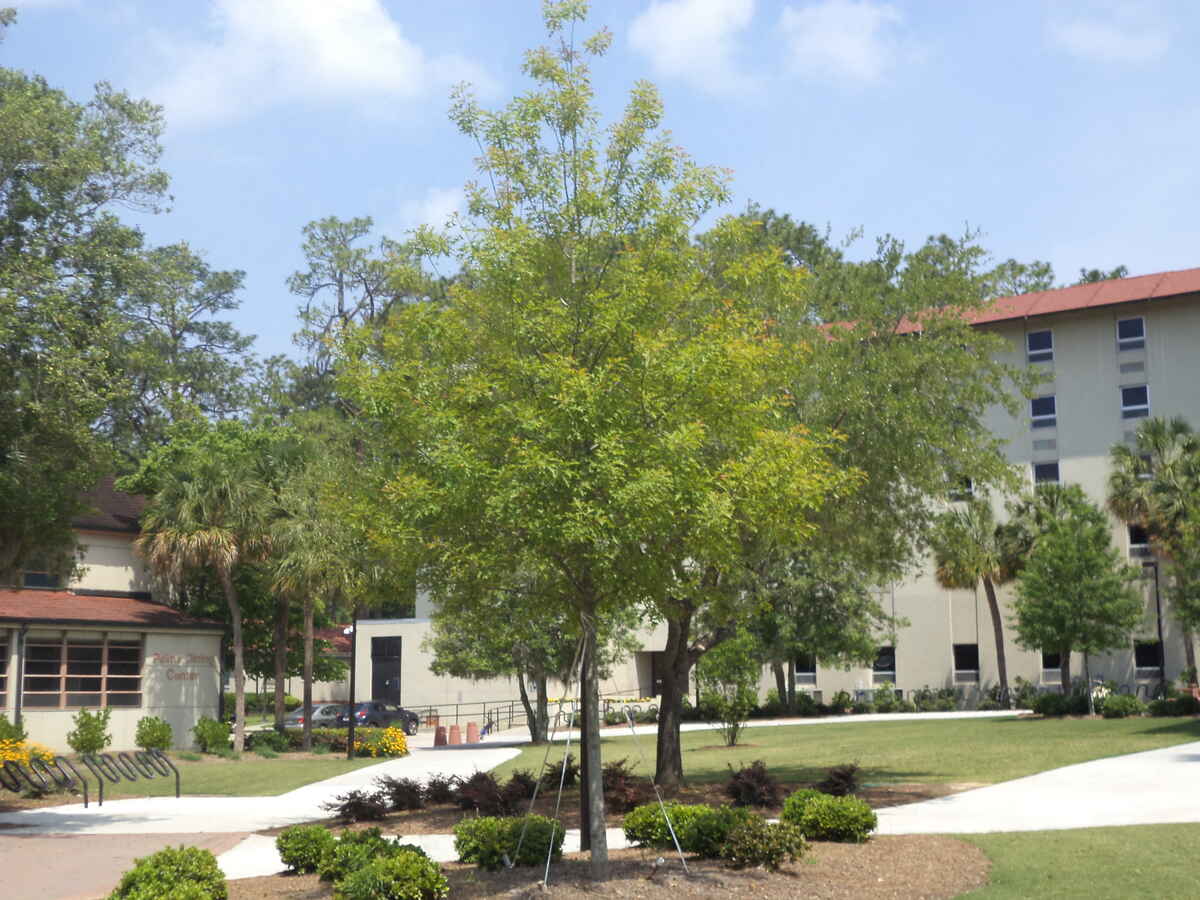
Thinking about planting a new tree in your Houston home? Visit any home and garden store or nursery and you’ll find plenty of options — but that doesn’t mean that they are the best options. Here are the six best trees to plant in Houston.
6 Best Trees to Plant in Houston
1. Nuttall Oak (Quercus texana)
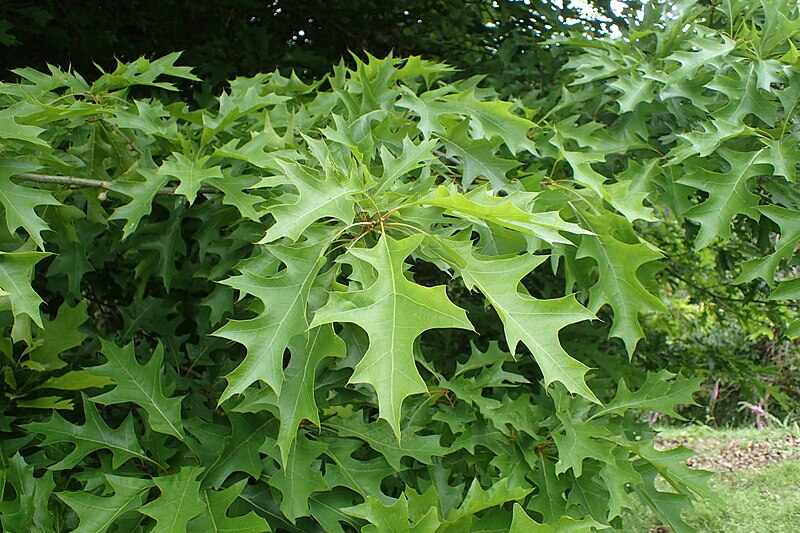
If you are interested in large trees, the nuttall oak (pictured above) is a red oak that is native to the Houston area. According to Skip Richter, Horticulturist for the Texas AgriLife Extension and Harris County Extension agent, the nuttall oak is one of the best large shade trees to plant in Houston.
“The nuttall oak puts up well with the soggy, wet soil we experience here in Houston,” he said. “It’s not easy to find because the market doesn’t demand it. The Shumard oak is a red oak that’s popular here, but the nuttall is a better choice because it’s so tolerant of our soggy, clay soil.”
Note: Houston sits in the USDA hardiness zone 9a, but the area just north of the city is in 8b.
Hardiness zones: 6b-8b
Sun: Full sun, with 6 or more hours of direct sunlight per day
Soil: Clay, loam, sandy. Acidic. Moist, wet, well-drained.
Mature size: 40-80 feet tall; 35-50 feet wide
Moisture requirements: Tolerant of poorly-drained, wet sites
Maintenance: Once established, needs little maintenance
Foliage: Deciduous
Flowers: In March and April, a yellow-green catkins (pollen-producing) cluster, as is standard for oaks
2. Drake Elm (Ulmus parvifolia)
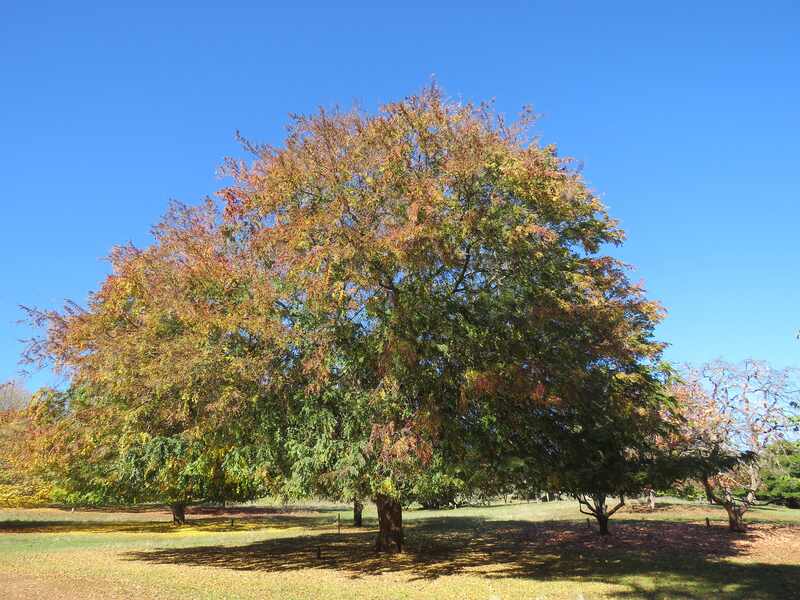
The best fast-growing and shade-providing tree you can plant in Houston is the drake elm, also known as the Chinese elm. While this beautiful tree is underutilized in neighborhoods, it is seen quite often in shopping strips. Its distinguishing feature is its bark, which flakes off in colors of gray and orange.
Skip Richter recommends this tree for several reasons. “It’s tolerant of crummy conditions, and it is really pretty,” he said. “The drake elm provides light shade and your grass around this tree has a better chance of survival.”
Hardiness zones: 7b-10b
Sun: Full sun, partial sun, partial shade
Soil: Clay, loam, sand. Acidic, alkaline. Well-drained, occasionally wet.
Mature size: 35-45 feet tall; 35-50 feet wide
Moisture requirements: Drought tolerant with moderate water requirements
Maintenance: Relatively low
Foliage: Evergreen in warm climates, deciduous elsewhere
Flowers: Dark green that turn to yellow and reddish purple in the fall
3. Mandarin Orange (Citrus reticulata)
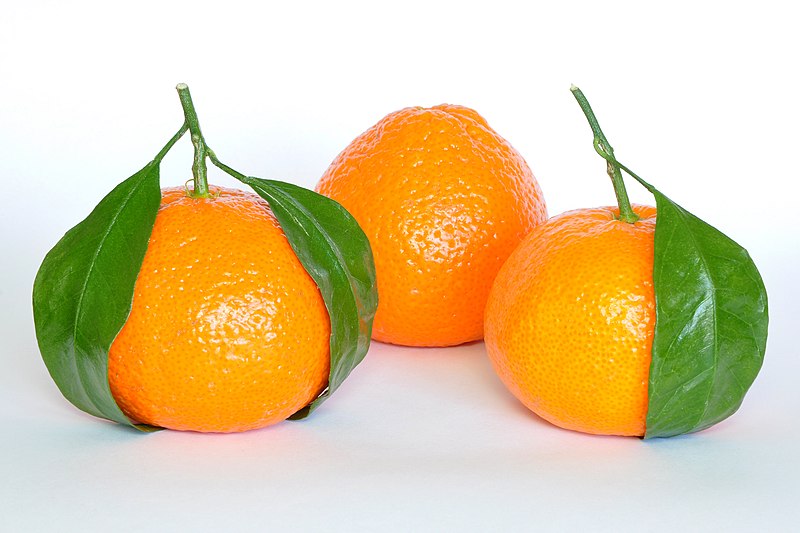
If you’re looking for a good fruit tree to plant in your yard, try a mandarin orange tree. (Sure, some might argue that persimmon trees are the best because of how well they grow, but have you ever tasted a persimmon? Ick!)
Now, there are two main types of orange trees available, mandarin (Citrus reticulata) and sweet (Citrus sinensis). Although sweet orange trees like Valencia and naval sound tempting, they don’t hold up well to the occasional cold winter snaps we experience in Houston. Mandarin orange trees like satsumas and clementine are tolerant of both Houston soil and the occasional cold spell.
Hardiness zones: 9a-11
Sun: Full sun
Soil: Clay, loam, sand. Acidic, slightly alkaline. Well-drained.
Mature size: 12-30 feet tall; 15-25 feet wide
Moisture requirements: Needs watering weekly, from rain or manually
Maintenance: Needs time and attention. Water regularly. Prune and fertilize every year. Monitor for pests and diseases.
Foliage: Evergreen
Flowers: White, small (about half-inch in diameter) with five petals
4. Eastern Redbud (Cercis canadensis)
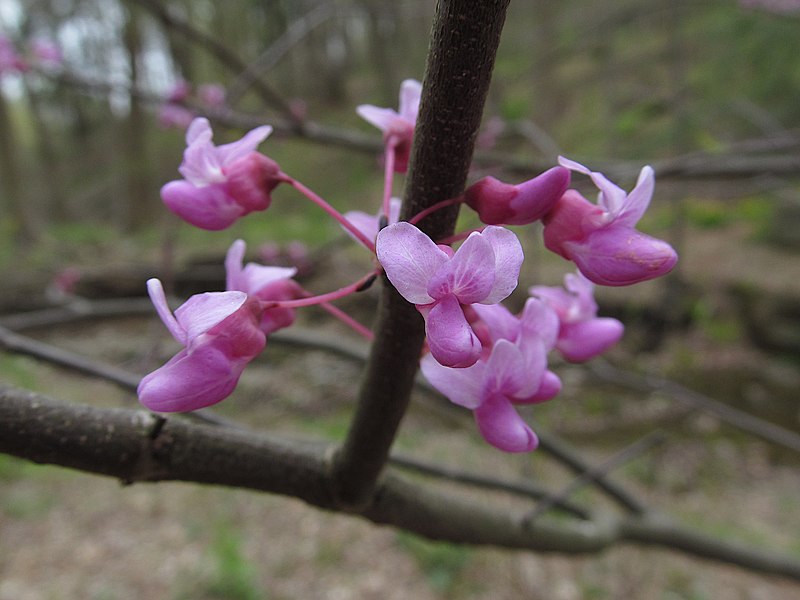
The Eastern redbud tree (Cercis canadensis) is a beautiful, small, flowering tree that blooms pink flower clusters in early spring around the same time as the azaleas. It’s drought-tolerant, adaptable to most types of soil and reaches heights of around 20-30 feet when it is fully mature. In autumn, the Eastern redbud is one of the small trees that provides great fall color with pretty shades of yellow.
Hardiness zones: 4b-9a
Sun: Full sun, partial sun, or partial shade
Soil: Clay, loam, sand. Alkaline, acidic. Occasionally wet, well-drained.
Mature size: 20-30 feet tall; 15-25 feet wide
Moisture requirements: Can withstand drought but grows best if it is watered until it is moist.
Maintenance: Very little maintenance is needed, which is why the trees are popular. You might mulch around the base to retain moisture, and prune away dead branches.
Foliage: Deciduous
Flowers: Though the name is “redbud,” the flowers are variations of pink or purple.
5. Southern Magnolia (Magnolia grandiflora)
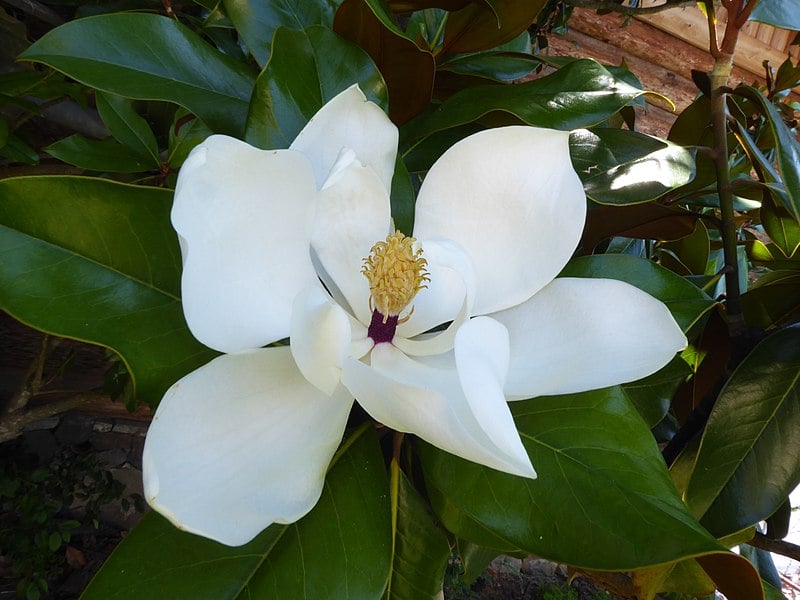
The Southern magnolia (Magnolia grandiflora) is an evergreen tree that’s common in Houston — and for good reason. It is elegant and stately and produces beautiful, fragrant white flowers each spring. This tree’s leaves are dark and dense and offer great privacy.
Avoid planting the Southern magnolia tree in your front yard, however, if you’d like to show off the front of your home because its thick leaves will obstruct the view.
Hardiness zones: 7a-10a
Sun: Full sun, partial shade
Soil: Clay, loams, sand, loam. Slightly alkaline, acidic. Wet at times, well-drained.
Mature size: 60-80 feet tall; 30-40 feet wide
Moisture requirements: Low drought tolerance. Does not survive in flooded conditions, but can tolerate high levels of moisture.
Maintenance: If not pruned, the lower branches will reach the ground. The Southern Magnolia drops leaves in the spring and seedpods in late summer, which in most locations (yards, streets, sidewalks) calls for raking.
Foliage: Evergreen
Flowers: Giant, fragrant, creamy white flowers that bloom in summer. The flowers sit in leaves that are dark green and considered to be quite attractive.
6. Mexican Fan Palm (Washingtonia robusta)
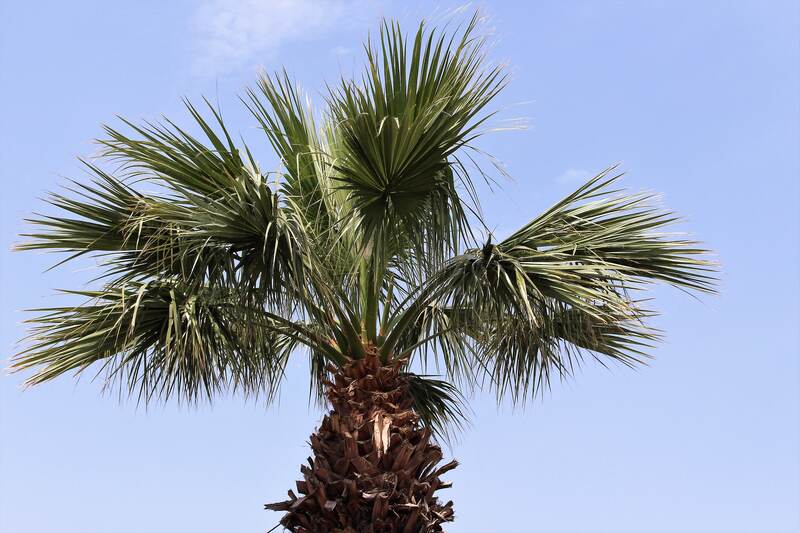
Houston summers are hot, no doubt. And many Texans have pools in their backyards, which most likely means that the trees of choice are palms. While the queen palm is very popular, the Mexican fan palm is a better choice. Mexican fan palms grow fast, and unlike other varieties of palm trees, they are very tolerant of both the Houston droughts and the occasional cold freezes.
Hardiness zones: 9a-11b
Sun: Full sun to partial sun
Soil: Loam, sand. Acidic, neutral. Needs drainage, can be dry at times.
Mature size: 50-100 feet tall; 8-10 feet wide
Moisture requirements: Drought, wind, and salt tolerant. Be sure the soil is well-drained.
Maintenance: So fast-growing it reaches heights of 70 to 100 feet, often making it too tall for a yard. Prune once a year, but lightly. Leave at least the top third of the canopy. Be careful if you prune; if you are on a ladder, fronds are known to fall on you.
Foliage: Evergreen
Flowers: Cream-colored and in large clusters. Slight fragrance.
Pro Tip: Check out How to Landscape With Palm Trees for more tips on using these majestic trees around your home.
Why Not Pecan, Texas’ State Tree?
You might be asking why the pecan tree isn’t on this list. After all, this Texas tree is the state tree.
“Pecan is not a good tree for Houston,” says Richter. “Pecan trees are found along river bottoms, and they like deep alluvial soil, not the black clay soil common here. Plus, they are kind of messy and have a good chance of breaking in a hurricane or strong storm.”

Why Not Live Oaks?
As for live oaks (Quercus virginiana), yes, they are beautiful and abundant here in Houston, but as Richter put it, “Most people want trees and a lawn. Trees shade out grass, and grass steals nutrients from trees.” It’s very difficult to grow grass in Houston under a live oak tree. Richter recommends the drake elm for those wanting both grass and trees.
Here are a few other trees that are among the worst trees to plant in Houston:
- Ash
- Bradford Pear
- Hackberry
- Japanese blueberry
- Mimosa
- Mulberry
When to Bring In a Professional Service
Planting a tree or two can be a rewarding, sometimes even fun, DIY activity. But if you are making a major investment in your Houston landscaping, or hope to make a major improvement in the value of your home or property, it is often worth calling in a professional service.
- A major cause of tree mortality in managed yards and spaces has been improper planting techniques. You want to prepare the soil, add nutrients, and free the root base.
- Planting at the wrong depth is common. Too deep: The roots might grow around the ball, strangling the tree. Too shallow: The tree might topple.
- You want to be careful about how close to your house you plant a tree. Too close and the roots have trouble finding nutrients, putting the tree at risk of falling (say, in a storm) … right on to your house.
- Planting guidelines keep evolving. A professional stays on top of them, especially on diseases that are moving into your area or trees that have been found to have a problem in your area.
The cost of planting a tree, a LawnStarter review finds, can be as much as $3,000 for each large, mature tree. There are often bulk rates, though. Hiring a professional service to plant a group of a few small trees will cost about $2,000, a price that includes materials and labor, the Lawnstarer review found.
FAQs
The best time to plant trees in the Houston area is the period from the middle of November until late February. Planting during this period allows roots to become established before the dry, hot days of summer.
Any pruning on a new tree should be delayed until the second year after planting, and even then should likely be limited to lower branches.
Oak wilt disease is destructive and is spreading fast through Texas. Oak wilt is an infectious disease caused by the fungus Bretziella fagacearum. It is spread above ground by beetles and below ground when roots of an infected tree cross paths with roots from a healthy one.
The best small trees for Houston, in addition to the redbud and the mandarin orange:
• Cherry laurel, Prunus caroliniana
• Crapemyrtle, Lagerstroemia spp.
• Fringe tree, Chionanthus spp.
• Hawthorn, Cratagus spp.
• Mexican plum, Prunus mexicana
• Southern waxmyrtle, Myrica cerifera
• Texas persimmon, Diospyros texana
• Yaupon, IIex vomitoria
These are the best large trees for Houston, in addition to the nuttall oak, drake elm, and Mexican fan palm:
• American elm, Ulmus americana
• Baldcypress, Taxodium distichum
• Black walnut, Juglans nigra
• Bur oak, Quercus macrocarpa
• Cedar elm, Ulmus crassifolia
• Eastern redcedar, Juniperus virginiana
• Overcup oak, Quercus lyrata
• Shumard oak, Quercus shumardii
• Water oak, Quercus nigra
• White oak, Quercus alba
Source: Houston Area Urban Forestry Council Tree Planting Guide
Trees Are Worth the Effort
There are a lot of good reasons to landscape with trees in Houston:
- Aesthetics. Trees add a level of attractiveness to an urban environment.
- Air quality. Trees trap dust and air pollutants, all while releasing oxygen.
- Energy conservation. Shade from trees can reduce cooling costs by 50%. By blocking the wind in winter, trees can reduce heating costs by 30%.
- Property value. Trees can increase the value of a property by 20%.
- Protecting the soil. Trees help in the effort to prevent soil erosion, especially by reducing stormwater runoff.
- Wildlife habitat. Trees provide food and shelter for birds and other wildlife.
You can add trees as a DIY project, or you can make a major upgrade and hire a professional. But do take the time to know what kind of tree will work out the best.
LawnStarter participates in Get Sunday’s affiliate advertising program. LawnStarter may earn revenue from products promoted in this article.
Main Image Credit: Michael Rivera / Wikimedia Commons / CC BY-SA 3.0
